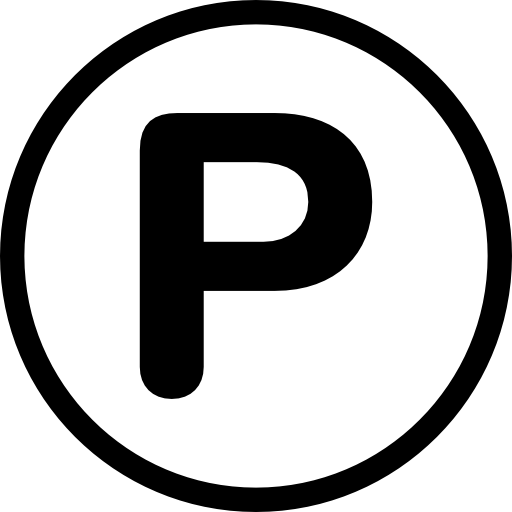
This image has format transparent PNG with resolution 512x512.
You can download this image in best resolution from this page and use it for design and web design.
Parking symbol PNG with transparent background you can download for free, just click on download button.
Parking is the act of stopping and disengaging a vehicle and leaving it unoccupied. Parking on one or both sides of a road is often permitted, though sometimes with restrictions. Some buildings have parking facilities for use of the buildings' users. Countries and local governments have rules for design and use of parking spaces.
Facilities include indoor and outdoor private property belonging to a house, the side of the road where metered or laid out for such use, a parking lot (North American English) or car park (British English), indoor and outdoor multi-level structures, shared underground parking facilities and facilities for particular types of vehicle such as dedicated structures for cycle parking.
In the U.S., after the first public parking garage for motor vehicles was opened in Boston, May 24, 1898, livery stables in urban centers began to be converted into garages. In cities of the Eastern US, many former livery stables, with lifts for carriages, continue to operate as garages today.
The following terms give regional variations. All except carport refer to outdoor multi-level parking facilities. In some regional dialects, some of these phrases refer also to indoor or single-level facilities.
Parking lots specifically for bicycles are becoming more prevalent in many countries. These may include bicycle parking racks and locks, as well as more modern technologies for security and convenience. For instance, one bicycle parking lot in Tokyo has an automated parking system.
In congested urban areas parking of motor vehicles is time-consuming and often expensive. Urban planners who are in a position to override market forces must consider whether and how to accommodate or "demand manage" potentially large numbers of motor vehicles in small geographic areas. Usually the authorities set minimum, or more rarely maximum, numbers of motor vehicle parking spaces for new housing and commercial developments, and may also plan their location and distribution to influence their convenience and accessibility. The costs or subsidies of such parking accommodations can become a heated point in local politics. For example, in 2006 the San Francisco Board of Supervisors considered a controversial zoning plan to limit the number of motor vehicle parking spaces available in new residential developments.
In the graph to the right or below the value above the line represents the out-of-pocket cost per trip, per person for each mode of transportation; the value below the line shows subsidies, environmental impact, social and indirect costs. When cities charge market rates for on-street parking and municipal parking garages for motor vehicles, and when bridges and tunnels are tolled for these modes, driving becomes less competitive in terms of out-of-pocket costs compared to other modes of transportation. When municipal motor vehicle parking is underpriced and roads are not tolled, the shortfall in tax expenditures by drivers, through fuel tax and other taxes, might be regarded as a very large subsidy for automobile use: much greater than common subsidies for the maintenance of infrastructure and discounted fares for public transportation.
Some airports charge more for parking cars than for parking aircraft.
Parking control is primarily an issue in densely populated cities in advanced countries, where the great demand for parking spaces makes them expensive and difficult. In urban locations parking control is a developing subject. Parking restrictions may be public or private. Local government, as opposed to central government, is the primary activator in public parking. The emphasis is on restriction of on-street parking facilities; and parking charges and fines are often major income sources for local government in North America and Europe.
Most colleges and universities in the U.S. charge for parking. Some colleges even have a parking services department that issue daily, weekly and annual parking permits as well as enforce parking ordinances. An example of one such department is at Western Michigan University.
Typically, communication about the parking status of a roadway takes the form of notices, e.g. fixed to a nearby wall and/or road markings. Part of the requirements for passing the driving test in some countries is to demonstrate understanding of parking signs.
Motorists parking on-street in big cities often have to pay for the time the vehicle is on the spot. There are fines for overstay. The motorist is often required to display a sticker beneath the windscreen indicating that he has paid for the parking space usage for an allocated time period. Private parking control includes both residential and corporate property. Owners of private property use signs indicating that parking facilities are restricted to certain categories of people such as the owners themselves and their guests, or staff members and permitted contractors only.
In this page you can download free PNG images: Parking PNG images free download